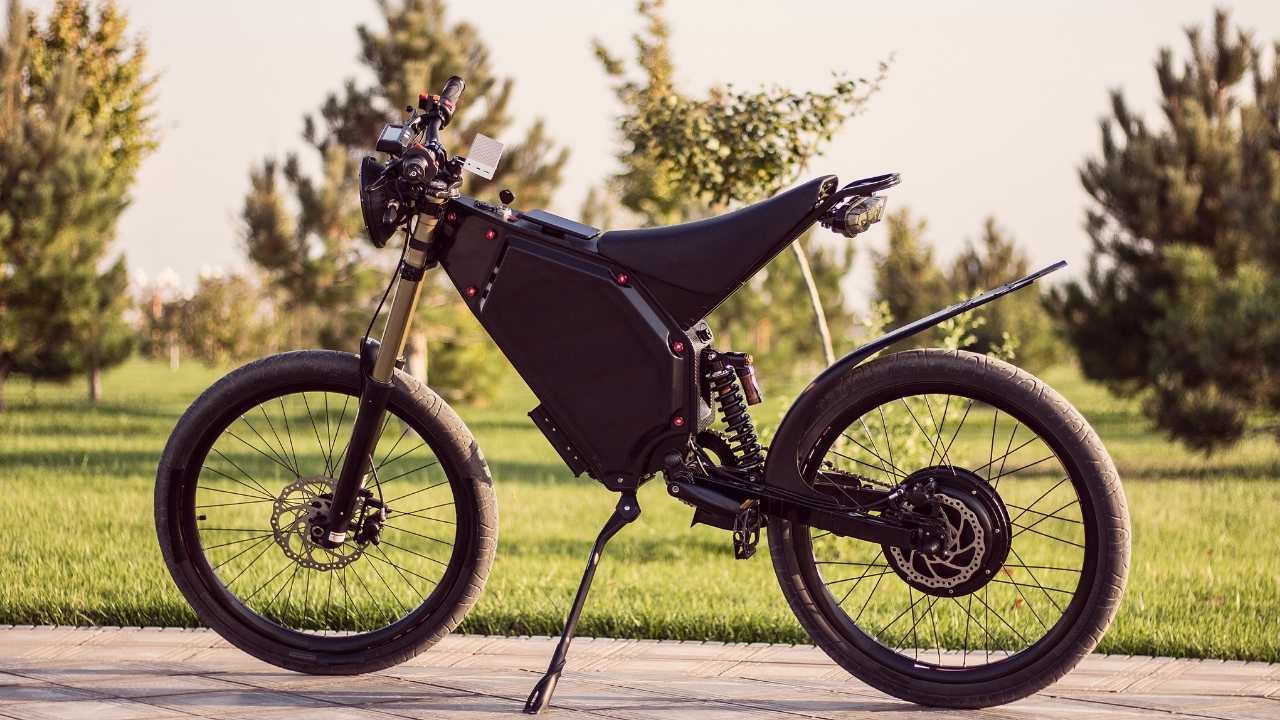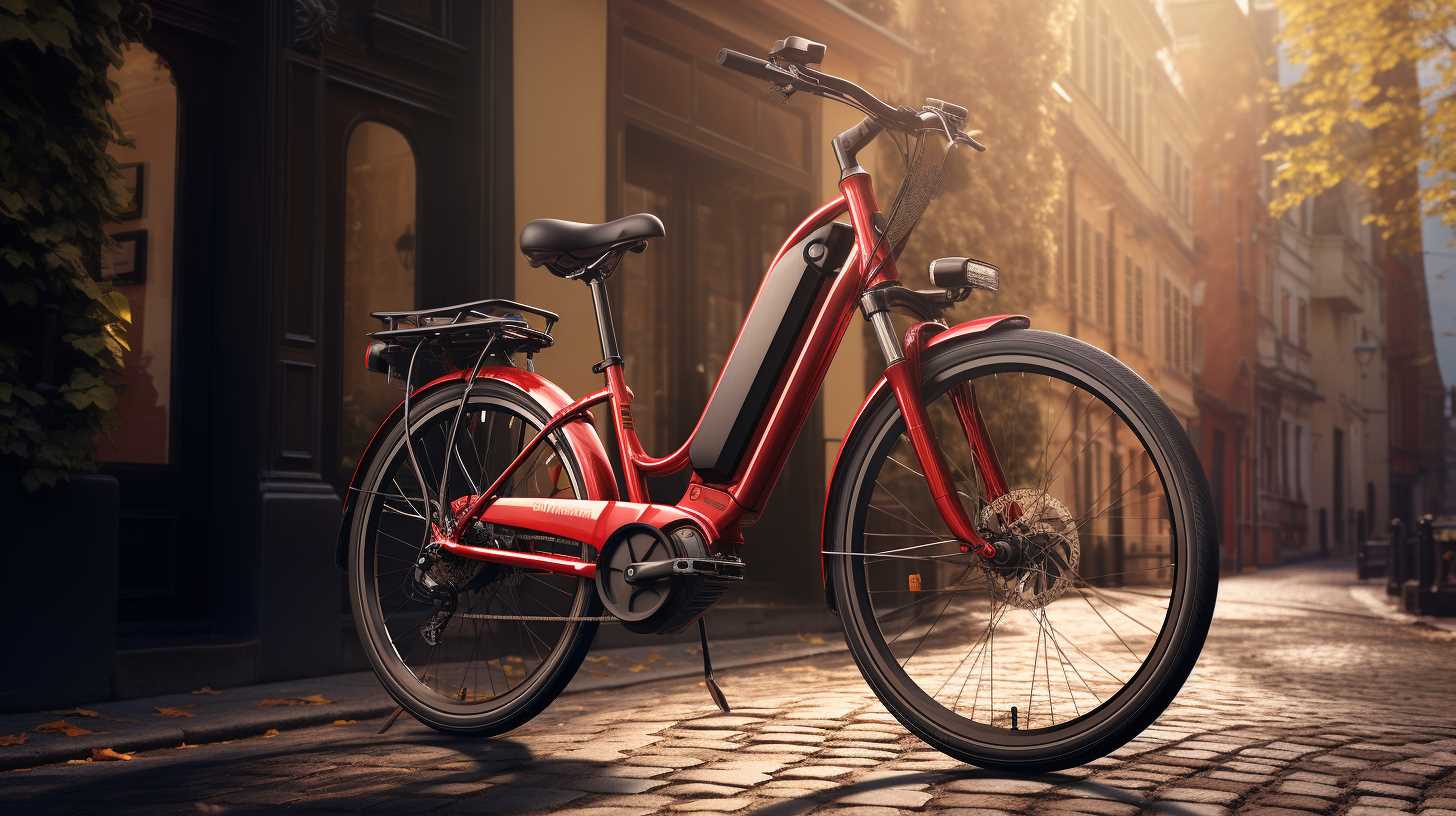
What Type of Battery Is Used in Electric Bike?

Electric bikes typically use lithium-ion batteries for their high energy density, long lifespan, and light weight. These batteries provide efficient power for riders while prioritizing safety measures to optimize performance and durability. They require proper handling, adherence to safety guidelines, and recommended charging practices to prevent accidents and guarantee longevity. For those curious about electric bike batteries, understanding the benefits of lithium-ion technology can elevate the biking experience significantly. Discovering more about the different types of batteries available and their unique characteristics can empower riders in making informed decisions for their electric bike journeys.
Lithium-ion Battery
Lithium-ion batteries are commonly used in electric bikes for their high energy density and long lifespan. These batteries offer a lightweight and efficient power source, making them ideal for electric bike applications.
When handling lithium-ion batteries, it is essential to follow safety guidelines to prevent accidents. Always use the charger recommended by the manufacturer to avoid overcharging, which can lead to battery malfunctions. Additionally, store lithium-ion batteries in a cool, dry place away from direct sunlight and extreme temperatures.
Regularly inspect the battery for any signs of damage, such as swelling or leakage, and replace it if necessary. By properly maintaining and handling lithium-ion batteries, electric bike riders can enjoy a safe and reliable riding experience.
Lead-acid Battery
Lead-acid batteries, an alternative power source to lithium-ion batteries, are sometimes used in electric bikes due to their affordability and availability. While these batteries are heavier and bulkier compared to lithium-ion counterparts, they provide a cost-effective solution for powering electric bikes.
Lead-acid batteries have been in use for a long time and are known for their reliability. They are relatively safe if handled properly, but users should be cautious due to the potential for leakage of sulfuric acid if damaged. Regular maintenance, such as checking the water levels and ensuring proper ventilation during charging, is vital to guarantee the safe and efficient operation of lead-acid batteries in electric bikes.

Despite their limitations, lead-acid batteries remain a popular choice for budget-conscious riders.
Nickel-cadmium Battery
The Nickel-cadmium battery, also known as NiCd, is a rechargeable option for electric bikes that utilizes nickel oxide hydroxide and metallic cadmium as electrodes.
Understanding the chemistry of this type of battery is essential for optimizing its performance and longevity.
Exploring the pros and cons, as well as the specific charging considerations, can help electric bike users make informed decisions about their power source.
Chemistry of Battery
Among the different types of batteries used in electric bikes, the Nickel-cadmium battery stands out for its long-lasting and reliable performance. Nickel-cadmium batteries, commonly known as NiCd batteries, are composed of nickel oxide hydroxide and metallic cadmium. These batteries are known for their durability and ability to withstand high temperatures, making them a vital choice for electric bike users concerned about battery safety.
However, it's important to handle NiCd batteries with care due to the toxic nature of cadmium. Proper disposal is essential to prevent environmental contamination. Despite this drawback, the chemistry of Nickel-cadmium batteries ensures a stable and consistent power supply for electric bikes, offering riders peace of mind during their journeys.
Pros and Cons
When evaluating the performance of Nickel-cadmium batteries in electric bikes, it is vital to consider both the benefits and drawbacks they provide.

Nickel-cadmium batteries are known for their durability and ability to handle a wide range of temperatures, making them a reliable choice for electric bike users who value safety and longevity. These batteries also have a longer lifespan compared to other types, reducing the frequency of replacements and maintenance costs.
However, it is noteworthy that Nickel-cadmium batteries are heavier and have a lower energy density than some newer battery technologies, which can impact the overall weight and range of the electric bike. Additionally, Nickel-cadmium batteries are known to suffer from the ' memory effect,' reducing their overall capacity over time if not fully discharged before recharging.
Charging Considerations
When it comes to the charging process for Nickel-cadmium batteries in electric bikes, it is essential to adhere to specific guidelines to maximize their efficiency and longevity. To guarantee the safe and best charging of Nickel-cadmium batteries, consider the following:
Nickel-metal Hydride Battery
Nickel-metal hydride batteries, commonly referred to as NiMH batteries, are a popular choice for electric bikes due to their balance of cost, energy density, and environmental friendliness. NiMH batteries are known for being safer than other types of batteries, such as lead-acid batteries, which can be prone to leaks and spills. They offer a good level of performance while being more environmentally friendly due to their lower levels of toxic metals.
When using NiMH batteries in electric bikes, it's important to follow safety guidelines provided by the manufacturer, such as avoiding overcharging or exposing the batteries to extreme temperatures. By handling NiMH batteries with care and following proper maintenance procedures, electric bike riders can enjoy a safe and reliable riding experience.
Lithium Polymer Battery
The lithium polymer battery, a popular choice in electric bikes, boasts a higher energy density compared to other battery types, providing longer distances on a single charge.
Charging efficiency rates of lithium polymer batteries are commendable, offering quicker charging times and increased convenience for riders.

Safety considerations are paramount with these batteries, as they require proper handling and storage to prevent potential risks.
Energy Density Comparison
Comparing the energy density of Lithium Polymer batteries provides insight into their efficiency and suitability for use in electric bikes.
These factors highlight the importance of energy density when considering the battery choice for electric bikes, ensuring a balance between performance and safety.
Charging Efficiency Rates
In the domain of electric bike batteries, an important aspect to ponder is the charging efficiency rates of Lithium Polymer batteries. Lithium Polymer batteries are known for their high charging efficiency, typically ranging from 95% to 98%. This means that when you charge your electric bike using a Lithium Polymer battery, you can expect minimal energy loss during the charging process.
The high charging efficiency not only helps in reducing charging times but also guarantees that the battery operates at its peak performance level. By utilizing a battery with such high charging efficiency rates, electric bike riders can enjoy longer rides without worrying about frequent recharging, making their overall biking experience safer and more convenient.
Safety Considerations Involved
When considering safety with Lithium Polymer batteries in electric bikes, evaluating their thermal management systems becomes crucial. Safety considerations involved with Lithium Polymer batteries include:
Factors to Consider
Understanding the key factors that influence the choice of battery for an electric bike is essential for optimizing performance and efficiency.

When considering a battery for an electric bike, capacity is important. The battery capacity, measured in watt-hours (Wh), determines the range the bike can cover on a single charge.
Voltage is another significant factor to contemplate. Higher voltage batteries often provide more power to the motor, improving the bike's performance.
Additionally, the battery's weight and size should align with the bike's design for balance and stability.
Furthermore, the charging time and lifespan of the battery are essential considerations for convenience and long-term cost-effectiveness.
Frequently Asked Questions
Can Electric Bike Batteries Be Swapped Between Different Models?
Electric bike batteries may not be universally interchangeable between different models due to variations in size, voltage, and connections. To guarantee safety and compatibility, it is advisable to use batteries specifically designed for the respective electric bike model.
How Long Do Electric Bike Batteries Typically Last?
Electric bike batteries typically last between 2 to 6 years, depending on factors like usage, maintenance, and quality. Regular charging habits, proper storage, and following manufacturer guidelines can help maximize battery lifespan.
Are There Any Safety Precautions for Charging E-Bike Batteries?
When charging e-bike batteries, it's important to follow safety precautions. Always use the manufacturer's recommended charger, avoid overcharging, charge in a well-ventilated area, and never leave batteries unattended while charging. Safety first!

What Is the Environmental Impact of Disposing E-Bike Batteries?
When considering the environmental impact of disposing e-bike batteries, it's important to address proper recycling methods. Recycling prevents harmful chemicals from entering the environment, supporting sustainability. Responsible disposal can minimize negative consequences, preserving our surroundings.
Can Electric Bike Batteries Be Recycled or Repurposed?
Electric bike batteries can be efficiently recycled or repurposed, contributing to sustainability. By implementing proper disposal methods and recycling programs, we can guarantee environmental responsibility and minimize waste, promoting a cleaner future.